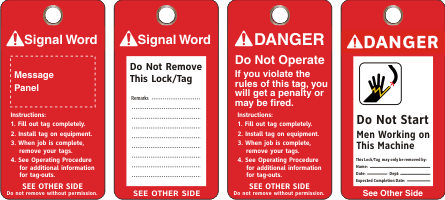A.
Although tags are generally used in conjunction with a lock, many larger companies still use tags alone. This approach works only when the company's training and tracking program is well established and effective.
In writing the OSHA 1910.147 rules, the issue of tags versus locks was debated extensively. Ultimately, OSHA decided that lock-outs were the preferred and safer way to ensure that equipment remain de-energized. Yet, they also recognized tags alone could be used when an energy isolating device was not capable of being locked out. Tags could also be used when the employer can "demonstrate that the tagout program will provide a level of safety equivalent to that obtained by using a lockout program" 1910.147 (a)(3)(c)(3). This more flexible approach is fraught with pitfalls. Many users acknowledge that tags are much easier and faster to use and hence more likely to be implemented than a program relying only on locks. Indeed, there are occasions when using a lock is impractical and even more dangerous than a tag. But, in developing your own program, you must honestly assess the effectiveness of your training, your written procedures and the capabilities of your work force.
Customers have often told us of situations when
lockout tags, when used with a good training and operating procedure, can be as effective as
locks. Certainly, tags are much easier and hence more likely to be used than a program relying only on locks. Indeed, there are may be occasions when using a lock is impractical and more dangerous than a tag. But, this is relatively rare. Be cautious.
